By Kevin Hymel
The German Panzer-kampf-wagen V (Panther) tank was superior to the American M4 Sherman in almost every respect, but it could not guarantee victory at every encounter. The Germans knew that their Panther, with its balanced design of firepower, mobility, and crew protection, was their best armored vehicle. It had a superior main gun and frontal armor. Its 75mm high-velocity weapon, while not as powerful as a Tiger’s 88mm, could easily penetrate a Sherman’s hull or turret at all battlefield distances. The frontal armor was 100mm thick and sloped to deflect shots. Its wide steel tracks gave it excellent cross-country performance and reduced ground pressure.
The Panther was originally designed to replace the German Mark IV tank in response to the Russian T-34 and KV-1. In fact, early design models of the Panther resembled the T-34 in both looks and layout. However, the Panther Committee decided in favor of more conventional engineering and this resulted in the unique Panther design.
The M4 Sherman Tanks Had Shortcomings in Design…
The Sherman was at a disadvantage. Although it mounted 75mm cannon, it was of a low-velocity type. The Sherman’s designers felt that a low-velocity gun would last longer than a high-velocity one. They failed to realize that few Shermans would ever last long enough in combat to wear out their barrels. Later versions would have an upgraded high-velocity gun, but they would not reach front-line units until late November 1944, five months after the Normandy invasion. The armor, at 81mm, was considerably thinner than the Panther’s and unable to withstand its armor-piercing ammunition.
But the Sherman did have some advantages. Its thinner armor made it lighter and more maneuverable on solid ground, an important advantage in the cold, hilly terrain and small villages of Western Europe. Also, the Sherman’s turret had a much quicker rotation rate than the Panther’s, usually allowing American crews to get off the first shot in combat.
The Sherman also enjoyed a greater reliability than the Panther, which was more prone to breakdowns and mechanical difficulties. No Sherman could—on paper at least—stand up to a Panther, but the U.S. Third and Seventh Armies had the priceless advantage of supporting airpower, plentiful reserves, superb logistics, and an overwhelming superiority of numbers. With its speed and ability, the Sherman could outflank the enemy armor, leaving many of them to face American tank destroyers and aircraft.
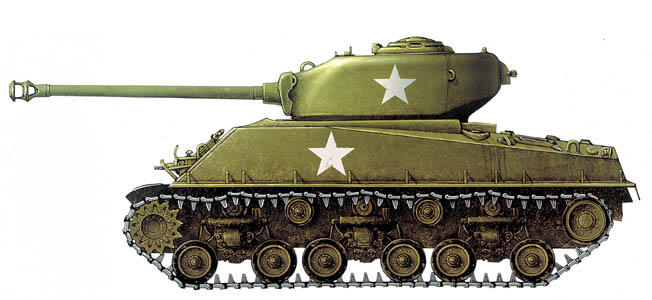
In the final analysis, there were simply too many American tanks for the Germans to deal with. The American war industry, free from bomber raids and supported by a motivated work force (Germany resorted to slave labor) produced nearly 50,000 Shermans, more tanks than Germany and Great Britain made during the entire war. Germany only produced about 6,000 Panthers.
From D-Day to the end of the war in Europe, American and Allied planes roamed the skies over occupied Europe, enjoying complete air superiority over the battlefield. Fighter planes often strafed and rocketed German front-line tanks and troops, while bombers destroyed production plants, supply depots, and petroleum, oil, and lubricant facilities. Closer to the ground, superior American artillery reduced German troop movement while pulverizing the enemy front line.
As a result of the air superiority, American logistics overwhelmed the Axis powers. Replacement parts were always in abundance. Tank retrieval crews pored over the battlefields, often while the firing was still going on, and brought back Shermans for immediate repair. Meanwhile, the Germans were forced to leave any damaged or broken-down Panthers where they stopped.
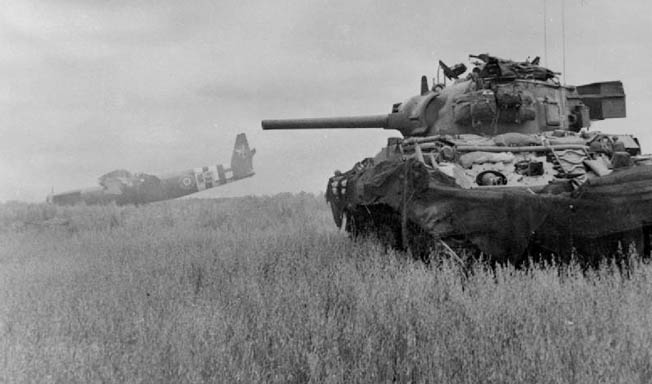
Experience as X-Factor
Sherman tank crews’ last great advantage was in experience, even though Germany had been at war six years before most of the American tankers invaded France. In early August, Adolf Hitler ordered that all new Panthers sent to the West would go to new armored formations rather than depleted divisions. Thus, Germany’s veteran tankers received lighter Mark IVs, while new, inexperienced crews got the better tanks. So whenever Americans faced off against the Panther, they were usually more skilled in the tactics of close combat.
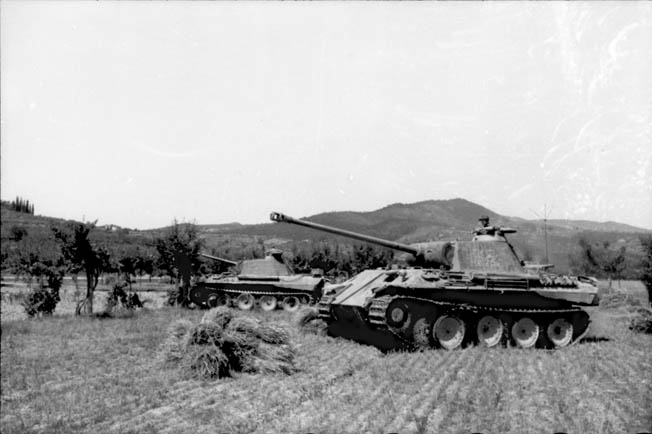
Despite their advantages against the Panther, American tankers knew their Shermans were no match for the Wehrmacht’s main battle tank; thus, the Sherman’s nickname in Western Europe was the “Death Trap.”
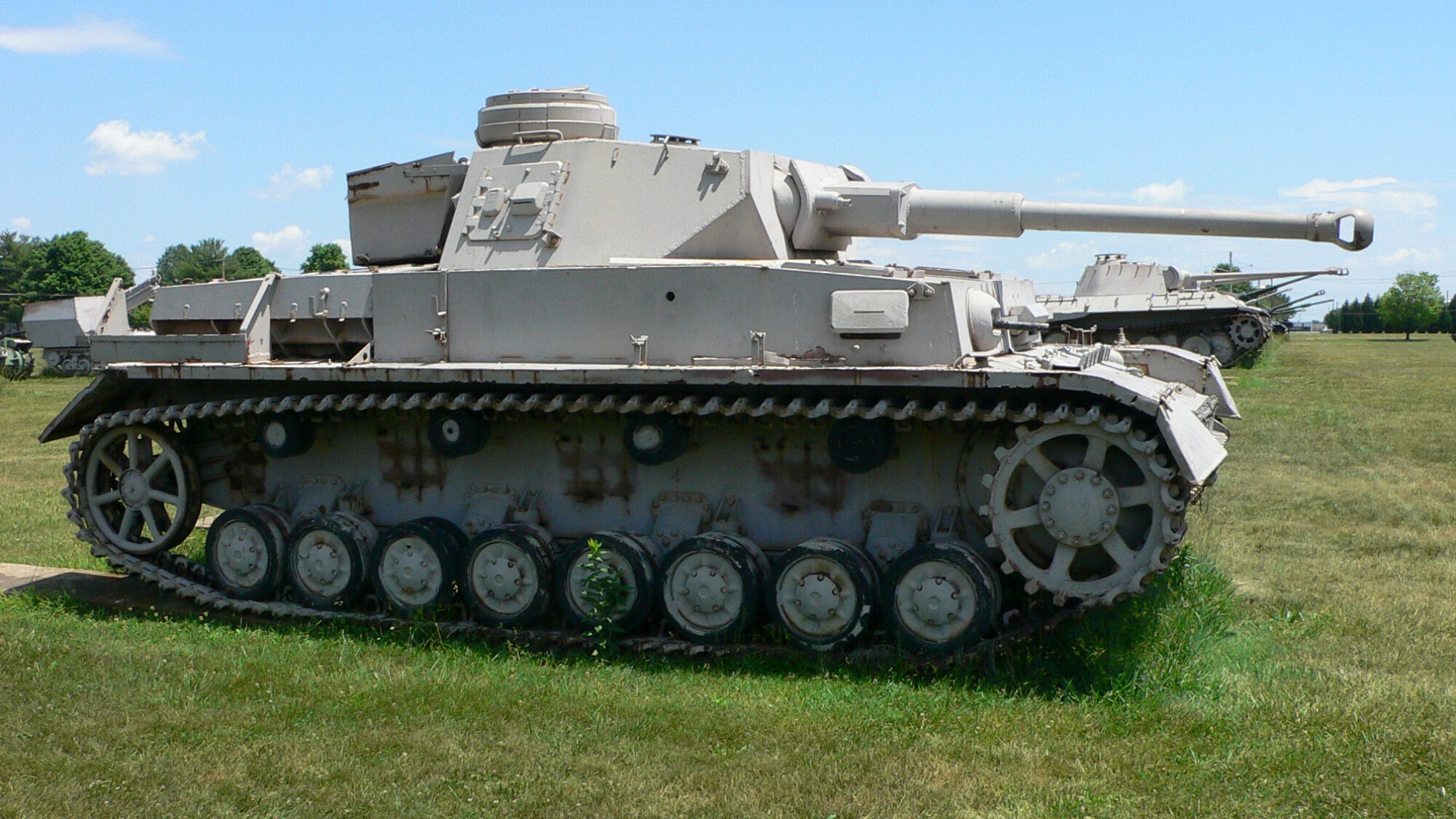
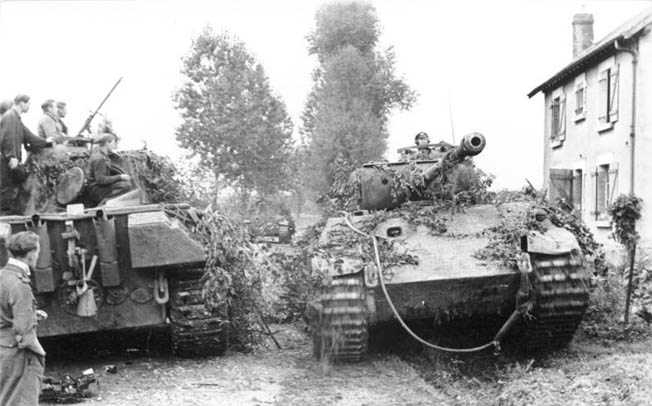

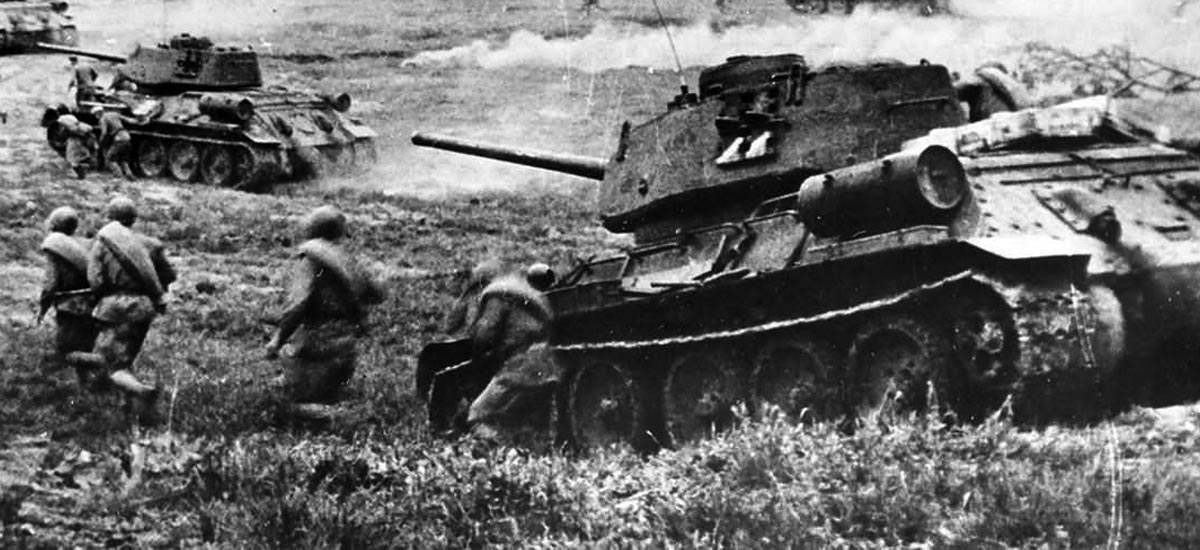
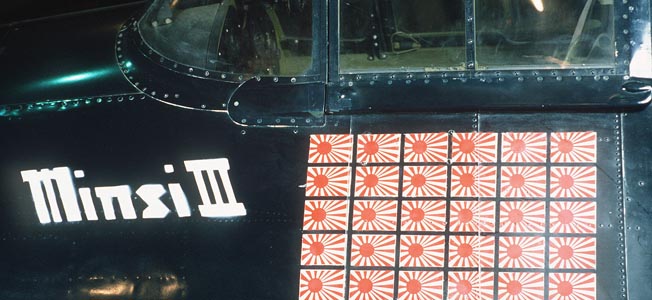
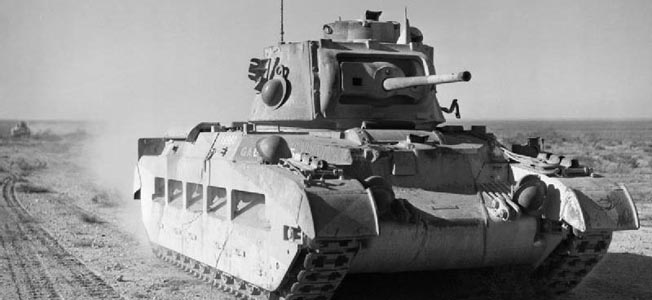
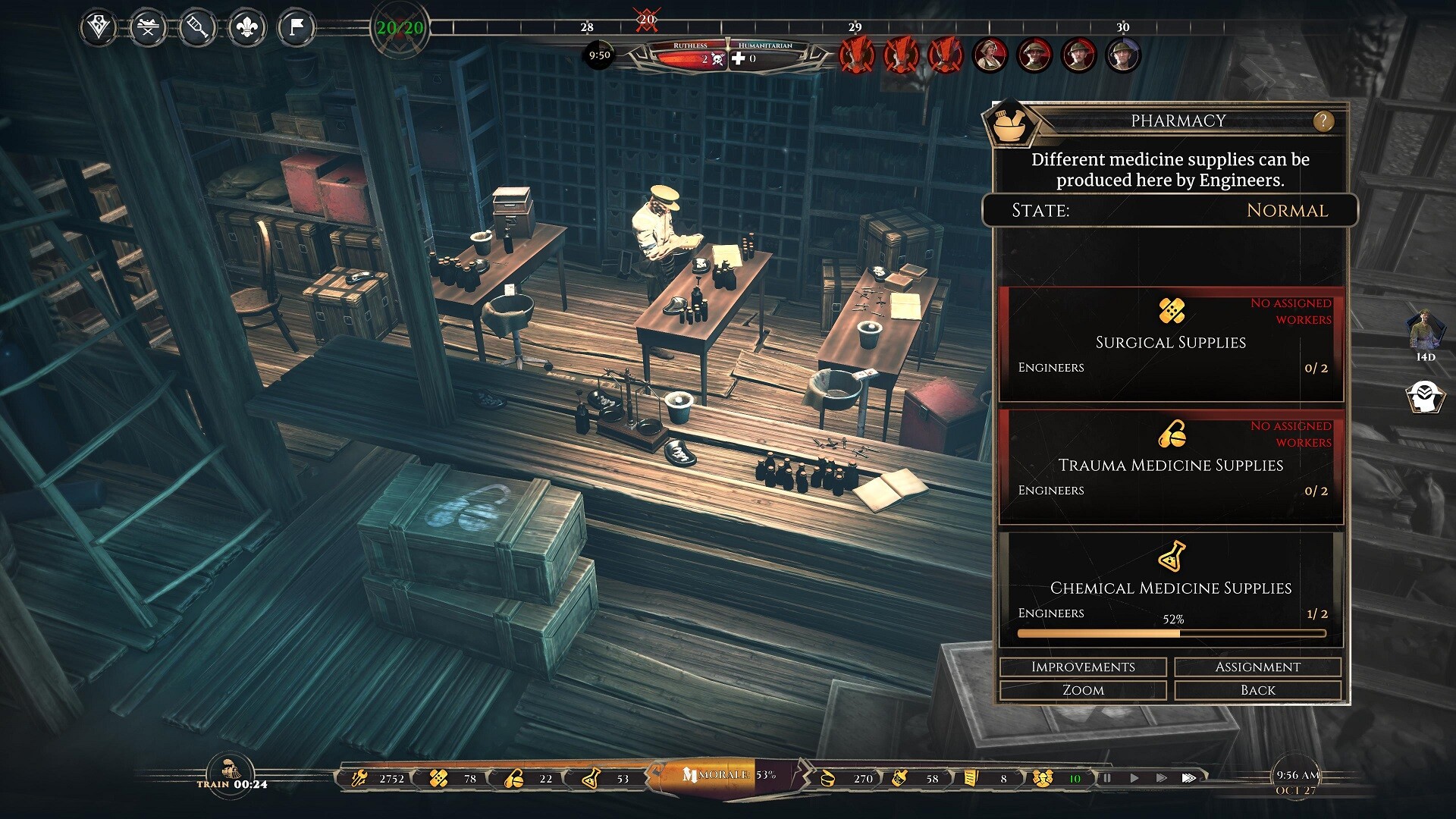
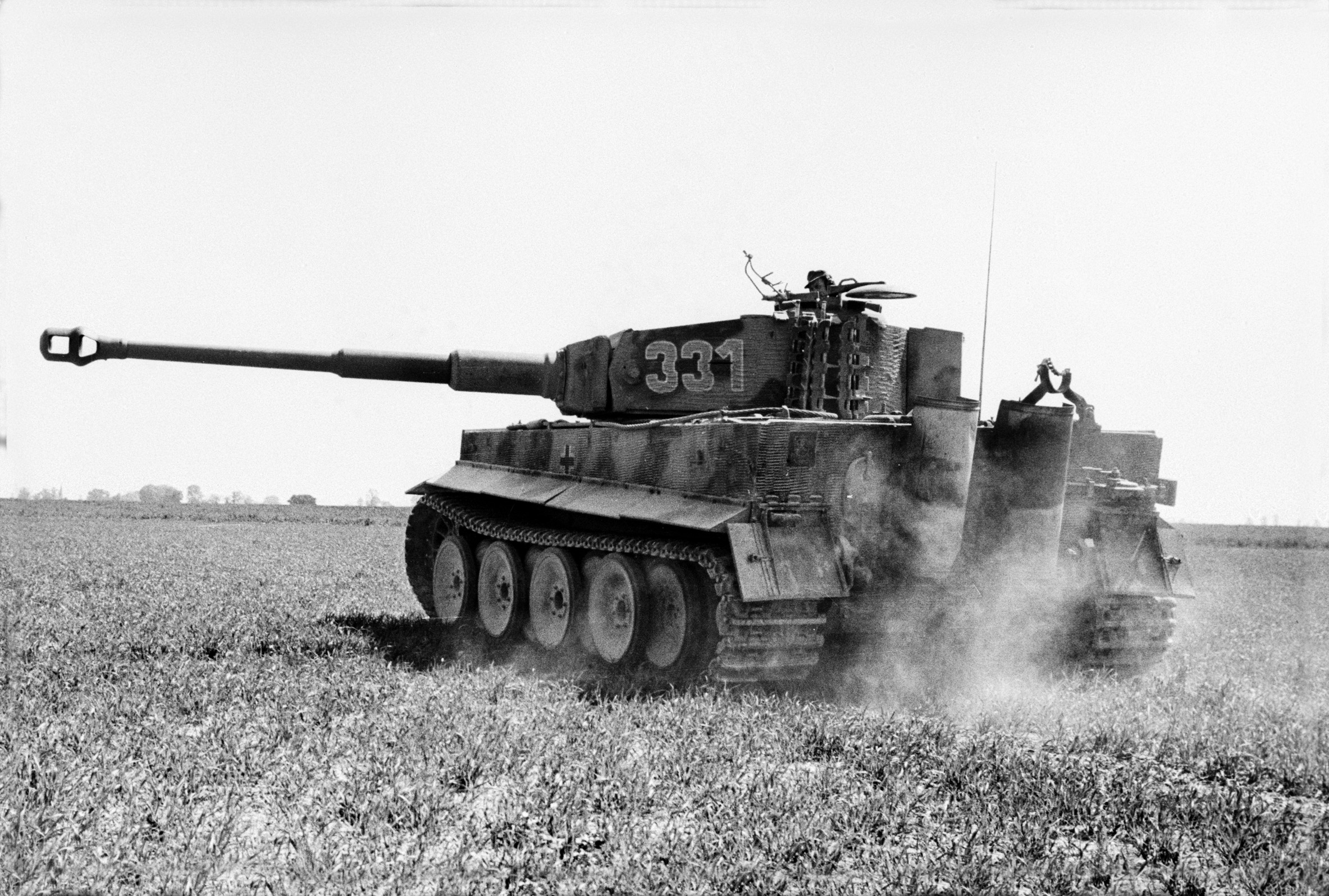
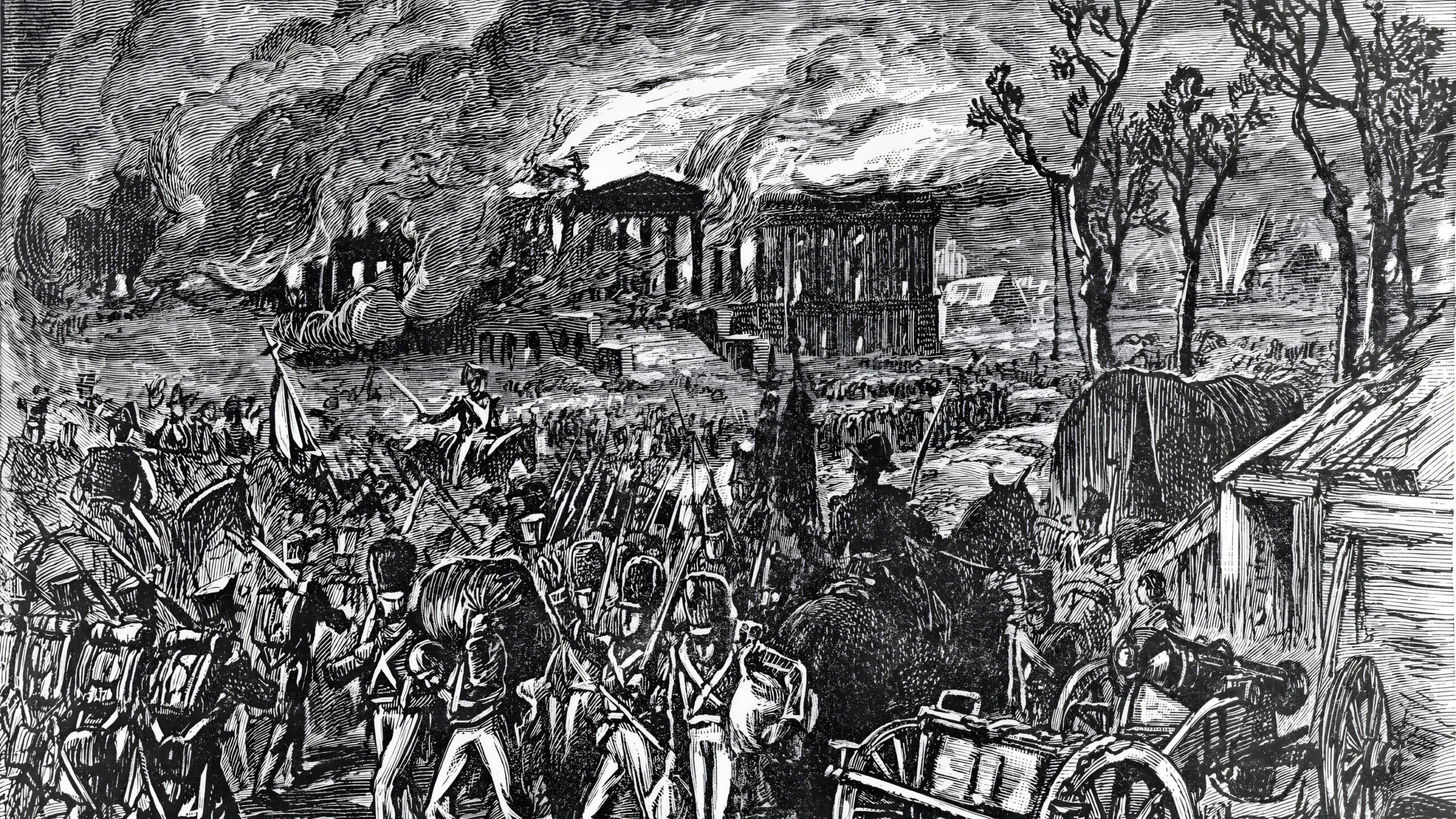
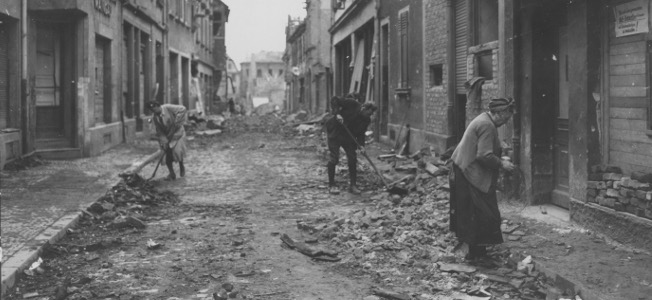
First and foremost that ” death trap” LIE was passed along by Belton Cooper- a nitwit who never actually faced combat but was a rear area supply officer.
The Sherman crew survival rate was higher than the Panzer IV and Panther tank crews( easier to escape)
Also ever here of the battle of Arracourt? US tankers blasted apart 88 german Panzer IVs, StuGs and supposedly superior Panthers for the loss of 25 Shermans. The majority of the tanks on that battle on the Us side were Sherman’s armed with 75mm cannon, some 76.2mm Sherman’s and a few 76.2 km hellcats and M10 tank destroyers with 3″( 76 mm) guns.
While the panthers 75mm HV cannon was potent, late 1944 their armor quality was questionable due to short cuts and manufacturing losses. When the Shermans had proper AP rounds they didnt have to fear the Panther or even the lesser available tiger and king tiger.( a platoon of 75mm armed Sherman’s ganged up on a Tiger II in the village of LeGlaize, Belgium and literally BEAT THE DOG CRAP out , mobility killing it and causing the wounded crew to flee!
There are plenty of after action reports with 75mm Sherman’s mobility killing german Panthers, and 76mm armed ones ” pinning” Panthers at 800-1000m .
Most US and UK and Canadian Sherman’s got ” killed” cause they used poor tactics,often getting AMBUSHED like in the hedgerow areas of Normandy .
Although there were at least a dozen german tank “aces”, when the US/ UK and Russians (Soviets) stopped bullrushing through combat zones with their tanks and actually started using BETTER tactics, German tanks STOPPED being so feared ( Russians used better AP ammo in their lend lease shermans like they did in their T-34s and got more kills, causing the germans to run!)
In fact 3/4 of allied armor kills by the german forces were done wiith anti tank cannon crews, not actual german tanks!
Please stop repeating ” sherman tanks were inferior” fairy tale- the Sherman’s were far more reliable, had better trained crews, better supply lines, and simply OVERRAN the germans ( who throughout the war still used horse drawn wagons like they did in the franco-prussian war to move supplies about!)
Actualy Arracourt is proof of the opposite, despite inexperienced german crews that bungled into the american lines, american tankers regularly had to hit the german tanks 5-6 times before knocking them out. The battle was a disaster for the germans but the survivability alone of their tanks on the battlefield was quite good. I dont get why people get so worked over who had the best tanks, WW2 proved that the war could not be won single-handedly by any one arm of the military, it didnt really matter if you only had slightly better armored vehicles.
Well Ur Right. The U.S. Could not win by themselves They won by Kicking The Germans Butts Not only had help from France Britain And U.K. this is the Reason why Ww2 was won. If The Death Traps Had a Better way to ambush the Panthers they would have Gotten better way to win a Tank battle. But These Panthers were high Amored And Had been built Though Panthers was a Hard Tank to kill its Amor was amored AP Shells Would Have A way to Hit A Panther and they had speed of 34 miles But The Sherman M4 Death Trap had speed too. So I say Both tanks were the best
Exactly. Not only was Arracourt badly bungled by the Germans but its also pretty debatable that those tanks losses had much to do with Shermans. Most seem to have been the result of airpower and artillery.
Good, level-headed comment. Merry Christmas!
All these comparisons are done on the assumption that tanks are engaged exclusively in tank on tank warfare. In that case the higher penetration of German tank guns over the 75mm Sherman is a real advantage. However when reading the actual results of engagements of the Canadian 2nd Armoured brigade against the Mark 4 and Panther tanks of the 12 SS in early June 44, the outcomes were more or less a trade off with no evidence of German tank superiority based on outcomes. Later engagements south of Caen against mainly panthers were the same. When all the advantages and disadvantages of both sets of tanks were factored in, the Germans did not have any real advantage, as the other factors offset the advantage of a more powerful gun (17 pounder Firefly excepted).
If you want to do the comparison on the basis of Infantry support, the main role of Canadian Shermans, the Sherman wins hands down over the Panzers as it had the most powerful high explosive ammo of any tank in Normandy and that is what you need to engage infantry in strong points, buildings etc. and any towed AT or artillery gun, or vehicle that is not a tank. If the Sherman had a higher velocity gun and a weak high explosive round, the allies would have taken much higher infantry casualties and more battles would have ended with the German infantry repulsing the attackers.
If you wanted to oversimplify it in a slightly inaccurate but very catchy way, you could say the germans tanks were built to win the battle, the Sherman was built to win the war.
You are spot on about the Sherman’s High Explosive ammunition. I also read that the HE had a delayed fuse feature that could be set so that they would penetrate the walls of buildings and explode inside. Making them much more effective.
Belton Cooper was no nitwit. It has been confirmed that he was indeed a maintenance officer. Until you are willing to stick your face into an after battle destroyed Sherman, and scrape up what’s left of crewman, or whiff burned flesh, be quiet! As for the Panther no Sherman crew wanted to go up against them unless they could hit the flanks or the rear first. Its great to have quantity, however explain that to maimed crewman of the tanks that had to be destroyed in order for other tanks to hit the flanks. US armored personnel issued the M4 Sherman were cannon fodder for Generals like Patton, and rear echelon Generals like Leslie McNair, as well as many government officials.
I need to see those sources bruh because no M4’s low velocity 75 had the pen to knock out a Panther outside of 400 yards the 76 could ONLY pen a Panther out to 650 yards 500 for the Tiger 1’s
You got you statistics messed up.
The 76mm M1A2 can penetrate 800mm at 1000 yards.
Meaning, the 76 could pen a tiger at 800-900 yards and pen the panther at less than 100 yards.
800mm?
At 1000 Yards?
You do realise that youre saying that the 76mm could penetrate 80cm of steel – nearly 1 metre (or 3 feet of steel) – at 1000 yards?
That is simply nonsense. Even the fearsome 8.8cm KwK 36 fitted in the Tiger I would only penetrate (with its best ammunition) 190mm at 750 metres range (and even the 43 model fitted on the Royal Tiger would only penetrate 180mm at 1000 metres with a 30 degree glacier).
I can look up the specs and performance of the 76mm in my books but, even if thats a typo and you meant 80mm, the panther front armour was 100mm and had a superb glacial angle, while the Tigers were even more heavily armoured to the front (although the Tiger I had no glacier on its front armour and that meant the armour could be pounded off with repeated hits – if anyone shooting at a Tiger could last that long). The Tigers also had superior sights and superior turret spaces. The upgunned Shermans had severe problems handling the larger main guns installed in their turrets to deal with the German tanks – recoil, smoke, dirt kicked up from the barrel blast, loading space, inferior sights
Bottom line, the German tanks could kill allied tanks from long ranges with very little difficulty, the reverse was absolutely not the case. Up close things evened out a bit but the german tanks still had the edge. Most German tanks were not destroyed by allied tanks – thats just a fact.
Godfrey Logdat, Your claim is patently ridiculous. It would take a 12 inch inch naval gun to penetrate 800mm of armor at 1000 yards.
Sherman tanks were inferior….according to their crews.
Sherman tanks were inferior pos Tommy cookers!
Great read!
I had a British friend who was a Sherman commander on D-Day. His assessment of seeing his mates slaughtered by the superior German tanks isn’t as “positive” as Mr Freener’s perspective. It seems the paper and specification-based assessment doesn’t match up with the tragic reality. He said they were terribly out gunned, under supplied, and the hedgerows weren’t being cleared by the SeaBees fast enough or couldn’t be cleared. He didn’t even discuss his D-Day stories in any detail until he wrote his memoirs some 50+ years later. God bless these men that were so brave to face the most unfavorable odds in a desperate fight to save the world order. RIP: Corporal Peter Morley.
Just want to put forth these quotes from esteemed historians:
“A German tank officer captured by the Americans is said to have sneered at his captors, boasting, ‘one of my tanks is as good as ten of your tanks!’ And, the American sneered back, ‘too bad we had eleven tanks!’”
– Dr. Christopher Gabel – Historian
“If the (U.S.) 3rd Army had Panthers instead of Shermans they’d never would have made it to Germany in the time they did, because they’d just have left their Panthers strung out, broken down,across northern France. The United States Army went from Normandy to Germany, and won the war, and did it with the Sherman tank. And, there’s really no other tank they could’ve done it with.”
– Frank Chadwick – Historian & Wargame Author
Also, a 75 Sherman could take out a Panther from the flank at 500 to 600 yards, as the armor isn’t very thick on its flanks; 40mm at 40°, for the Panther G – that’s not very much!
Mark,
Totally agree with your comments however one thing is missing is the fact that both the Shermans main gun 75mm and 76.2mm were quick firing and could be fired on the move. A Book on the British Sherwood Rangers Yeomanry “Brothers in Arms One Legendary Tank Regiments Bloody War from D-Day to VE-Day” James Holland Author, is a good read and has some interesting facts concerning their use of the M4 Sherman and the up gunned 17 pdr Firefly. Cheers and Have a Great 2024 – Regards Alan George
Thanks for mentioning this! I’m reading that book (Brothers in Arms One Legendary Tank Regiments Bloody War from D-Day to VE-Day) right now. It says exactly what you shared – that the Sherman had its faults however it had the fastest rate of fire of any tank in WWII and could get off 20 rounds in a minute. It said we could hit the enemy 10 times (if we saw them first) before they could get a shot off. It also mentioned the geostabilizer that helped accuracy while on the move. And some of the Shermans raced almost 1,000 miles during fighting from Normandy to Germany without breaking down. Something the German tanks were incapable of doing. The British tankers were happy to have them.
For the life of me I don’t know why our WWII tankers didn’t use White Phosperous when going up against superior enemy tanks. One tale of a Sherman against a German Tiger tank relayed that in desperation (or by mistake) they did just that and the burning WP blinded the occupants. Plus once the smoke was sucked inside the crew compartment the German tankers bailed out thinking the tank was on fire and ready to cook.
I also read “Death Traps: The Survival of an American Armored Division in World War II” by Cooper and it was a fantastic read. A perspective never before put into the public sphere. A must read for anyone interested in WWII armour.
The only decent Sherman was the British Firefly, it killed Tigers at a 1,000 yards, Panthers were easy meet for the British 17 Pounder.
Right you are !!
Yes, and this very US-centric article (no change there, then) doesn’t reflect the fact that Fireflies were in action in Normandy from June 1944. They were needed there, of course, because the only Tigers were facing the Anglo-Canadian forces. And, of course, 2nd Army faced the bulk of the Panzers in Normandy.
According to British historian Sir Max Hastings, “no single Allied failure had more important consequences on the European battlefield than the lack of tanks with adequate punch and protection.” The Sherman, he added, was one of the Allies’ “greatest failures.”
I did a quick Google search and did not find the credentials of a Mark Feener but quite easily found the credentials of Sir Max Hastings – certainly no ‘nitwit’ and Cooper wasn’t either, might want to pay attention to those who actually saw the damage these tanks and crews suffered.
Max Hastings is a journalist, not a military historian, and is widely regarded as being at least 30 years out of date in his work. He is also credited as being the original “Wehraboo” and wildly biased in favour of the Germans. Please pick up works by professional military historians such as Peter Caddick-Adams or John Buckley, who are both professors in their own field. Not journalists.
You took the very words from my keyboard! Absolutely correct. Max Hastings chooses a point of view then takes singular aim – like the journalist he is.
Belton Coopers book is a personal anecdote not a scholarly work and has been widely discredited due to the huge number of inaccuracies and just plain falsehoods throughout.
Sorry but Belton Cooper WAS AN IDJOT, and politely speaking, he was a LIAR.
He claimed the M-26 was ” held back ” from combat and could have been deployed earlier when in fact during the Normandy ( Western front) invasion,-26 tanks were still being TESTED back in the US. Cooper also got quite a few ” facts” wrong in his book as well as falsely claimed to know or have been in the area of combat when he wasn’t.
As for his ” sticking his head into a battle damaged , blood soaked Sherman?” Cooper didn’t do anything more than any other REAR AREA repair soldier did, so boo boo to his REMF suffering.
Also there ARE after action reports of 75mm shermans knocking out Panthers as well as 76.2mm Sherman’s pinning Panthers from 700- 800 meters- they didn’t have to drive BEHIND a Panther to destroy it!
The main threat to Sherman’s were not the Panthers or Tigers but anti tank cannons set in ambush, STuG tanks laying traps. Even up to the end of the war , Sherman’s often engaged Panzer IVs more often than anything else, and held their own.
Check out Chief (warrant officer) Moran, he lists actual FACTS about the Sherman that showed it was the BETTER tank for the war, based on many factors than the vaunted ” Uber weapon” Panther.
The main pourpose of the tank concept is to SUPPORT INFANTRY not engage tanks. Yea they did but most tank battalions left the tank combat to the tank destroyers who with 3 inch guns made easy work of german tanks. People bash the sherman because it was “inferior in the face of german tanks” well they were, only to the big cats though. The 75 sherman could easily take care of the panzer 3s and 4s it came across 80 percent of the time. But in its role its supposed to be in which is an infantry support vehicle it performed very well. German AT crews with the long 88 and the short 88 could easily front penetrate the sherman but as soon as they do they are immediently fired upon by 4 other Sherman’s (American tank battalions consisted of 5 tanks) with 50cals and HE rounds. Yea tell me those guns will survive because they wont. And not to mention 3-4 crew will get out due to easy escape hatches. The only ones who will die would be the crew directly in the way of the penetrating shot. So in conclusion the sherman was NOT a bad tank in the role it was designed for, it may have suffered against panthers and tigers but only because it wasn’t meant to fight them. That’s the m 10s, m 18s, and m 36s, job these TDs could make quick work of hand and his crew if they came across them.
What’s the point of trying to make quick work of Hans and his crew using moronic field tactics like was common for western allied troops. Unfortunately for John, Hans had fought on the eastern front against Ivan two tours of duty before John was eventually hauled into Normandy. John wasn’t a soldier, he was a civilian drafted into the army and got made quick work of himself in most cases. By the end of the Normandy campaign, despite huge overweight in air support, artillery, supply chain and unlimited reserves the allied had a staggering 100% casualty rate across its frontline divisions. Germany equally suffered a staggering loss of life, but with only a single replacement for every fifteen casualties they simply lost a battle of attrition, rather than having been defeated by ability.
Only a team of 5 Sherman’s can outrun and defat a panzer cause 2 can damage but 5 can defeat.
Nope it didn’t take 5 Sherman’s to kill a Panzer, 75mm Sherman’s took on Panzer III/ IVs and killed them routinely
The 1946 US Army’s ballistic research Lab studied after action tank battles and discovered that at least with the US 76.2mm Sherman’s, the Sherman enjoyed a 3.6 to 1 kill ratio against the Panther tank.
Better training, experienced crews, armor and cannon upgrades, Better tactics AND a more reliable tank platform.
As for a funky British nobleman (Max Hastings) who still saw ” nobility ” in thinking WW1 tactics calling the Sherman
Tank a failure???? He’s a arm chair historian BORN AFTER THE WAR, with NO military experience at all.
Interestingly enough most American TD’s were M10’s with the 3″ gun, or M18’s with the 76mm gun which fired the same round as the 3″ with similar ballistics (just a separate case. By Arracourt, some 76mm Sherman’s were coming into use, more by the Bulge, including the M4A3 (76mm) HVSS.
76mm Sherman’s were just as capable of taking out Panthers as TD’s, with only the 90mm M36 Gun Motor Carriage being better in the U.S. inventory until the T26E6 Pershing came along.
The big difference was the TD units were more extensively trained to fight tanks.
Ironically, when there were shortages of TD’s some TD units were issued 76mm Sherman’s as replacements. The 76mm Sherman proved to have adequate mobility to hang with the M18 Hellcats, and the same firepower. The Sherman had better protection than the Hellcat, and an armored roof. There was nothing an M10 could do a 76mm Sherman couldn’t either.
The TD’s did an excellent job with what they were given to work with. But ironically, those same men could have been integrated into tank units with 76mm Sherman’s, given similar training, and done the same job.
The German tanks were tough, but there were never enough, their reliability issues kept them out of battles where they were needed, high fuel consumption often meant they retired early before battles were over. The best tank in the world is of no use if it’s not their when you need it.
No, on paper the Sherman was not equal to bigger German tanks. But the honest truth is a properly crewed and handled 76mm Sherman could, and frequently did, deal adequately with Tiger’s or Panther’s. And it was a match or better for Stug’s or MkVI’s that it more typically encountered. And there were plenty of them.
“One reason … George S. Patton … believed his armored corps would beat the Germans was not necessarily the superiority of the Sherman (though underrated in truth) or the M-1, but because American men loved machines, knew how to fix them… A Tiger or Panther might blow apart a Sherman, but not when there were 10 expertly maintained Shermans cruising through France for every unreliable or out-of-commission Panther and Tiger, whose engines and transmissions needed experts to repair or replace.”
—Victor Davis Hanson
http://victorhanson.com/wordpress/optimism-inc-serendipity-on-the-farm/
Ah, the Patton myth. Its worth pointing out that – contrary to the movie Saving Private Ryan – no US forces in France faced any panzer heavier than a PZIV and none faced any SS units. The SS units were given the best and heaviest tanks and they were concentrated aroud Caen on the British/Canadian/Polish sector (the heaviest concentration of SS divisions of WW2). Thats why it took so long to take Caen. And thats why Patton could go gallivanting all over france largely unopposed – he mostly faced obsolete french tanks from 1940, T38s and PZIIIs and, in one noteable case, a bunch of czechoslavakian tractors from the Skoda works that had tank bodies and guns jury rigged onto their chassis. Thats one reason why if you look at the line up of tanks on the German side you find so many weird models in the jagdpanzer/assault gun categories – they were literally designed and manufactured on pretty much any chassis the germans had handy, which often meant chassis from all over occupied europe with wildly different specifications.
That’s just not true. Before and during Operation Cobra, the U.S. faced the 2SS Panzer and Panzer Lehr divisions, as well as 17SS Panzer. Both 2SS and Pz Lehr had PzKw V tanks (Panthers).
The Sherman was designed to fight infantry it’s 75mm gun was much better in fighting infantry then the Panthers btw only 14 percent of the Sherman’s engagements were against German.tanks
When the US entered WW2, it was asked of two people, one of which was Patton, would we need a better tanks than the M4, still being developed to counter the German heavy tanks. Patton’s opinion was that the German’s weren’t idiots and would keep them there where they were perfect for the type of combat unique to that front. Well they didn’t and we encountered many of these vehicles in Italy and France. The reason we decided on the M4 was when you look at the M4 versus the Panzer 4, or any other vehicle in the German Armor Corps based on that vehicle, the Sherman is a superior vehicle. We also intended to be like the Germans in 1940 and overwhelm and overrun our enemy, and not the French, who had Char-B tanks that could and did destroy many of the Panzer 1and Panzer 2 tanks, and were largely impervious to the standard 37mm German anti-tank guns. The Germans still reached Paris and the French Army surrendered before they needed to destroy these machines.
Our goal was to be that army. We wanted combined arms doctrine, and by late 44 and early 45 were calling in air strikes from the front line like we did in ‘Nan on the Germans when needed.
In situations that is was obvious the objective, Arracourt and the Ruhr pocket, the US army won. In fact the allies, generally beat the living snot out of the Germans. In fact, during the Battle of the Bulge, the Wehrmacht formation using Stugs and Mark 4 tanks, made it to the Meuse north of the Elsborn ridge, whereas the 1st SS Panzer, using Panther and Tiger B tanks bogged down and could not move those mammoths fast enough. The SS killing of Belgian women and children, and our soldiers, also galvanized the US soldiers to stand their ground in that area where surrender was not considered and option and our GIs also felt the obligation to stop the slaughter of non-combatants in some of the war’s most brutal fighting.
The Sherman, while not exactly up to the job of engaging Panther’s and Tigers, and vulnerable to German 75 and 88mm AT guns, or late war vehicles like the Hetzer, which was basically a mobile AT gun, was perfect as a breakthrough vehicle and well suited for engaging German infantry strong points that were emplaced to stop or slow down breakthroughs.
Patton viewed tanks as one cog in the wheel of a mechanized army, that included artillery, mechanized infantry, air support, and logistical support. That is more the reason we “settled” on the Sherman.
Think about logistics: Sherman’s weighed about half of what a Tiger would weigh. Therefore, on moving them across the Atlantic we could move two for every one heavier tank.
This was the US Army, the same one that on the Civil War and figured out in War more was more…… and for that reason we used the Sherman.
It is pretty clear that if you put a Sherman on one end of a field and a Panther on the other end, the Panther will win. But in the big scheme of things that wasn’t a deal breaker for the US. The US main weapon against the Wehrmacht was artillery from the first Battle at Kasserine pass to the end of the war. Even General Patton, popularly thought as a tank man, told Eisenhower he estimates 80% of German casualties to his third army was to his artillery. Because you see a tank can’t take an objective by itself. For that you need boots on the ground. The US might have difficulty killing Panthers with a Sherman or tank destroyers but we had such great artillery that we will kill everything else. And a unsupported tank is severely limited in what it can do.
One thing.
Panther: one high velocity 75mm gun
100mm FRONTAL armour
2-3x 7.92 mg
28mph
Sherman M4A3
one low velocity 75mm gun
100mm armour
2x 7.62mm machine gun
1x 12.7mm machine gun
26mph
2 inch smoke mortar
This shows that on paper the panther has a better chance of winning. Also, a lot of U.S reports DO say of panthers being destroyed by 75mm sherman but all at small ranges like 400m. It was better for an infantry support tank.
TANK DRIVERS were a big difference too.
You can basically tell that an article about the Panther is going to be awful when it focuses on the 100mm front armour and makes no mention of the 40mm side armour. A tank that is twice as long as it’s wide is not going to guarantee that it faces all opponents head on, is it?
I’ve never been in either tank. Don’t know much about the strengths of either.
I do know, that no matter how effective your weapon is, it also has its weak points. Ones ability to capitalize on those weak points to neutralize its strength is what gives you the advantage.
History has punctuated this point.
You guys should watch the video “Myths of American Armor: TankFest Northwest 2015” by The Chieftain on YouTube. He has multiple other videos on the Sherman’s, Panthers, and other tanks. He will explain every thing. For more info find his videos on the Sherman (mainly the ones that have the crowd in it).
And from what I could find, according to some tests done by both US and UK militaries was the the main factor in who would win between a Panther and a Sherman (the one with the 76mm) was whoever spotted and shot the other first.
The YouTuber LazerPig has a video on the Panther (even on the T34 and A-10) where he explains why they were some of the worst vehicles. On the tanks he gives both hard factors and soft factors to a tank. Speed, Armor, and Firepower (hard factors) aren’t as important as people think, which is why the Sherman usually outperformed most other vehicles because it may not have been amazing in the hard factors (it was decent though) is did very well at the soft factors. Watch LazerPig’s video for a better explanation.
At least on the post I am looking at, the main picture has a Pz IV with the Panther being in the background. I didn’t even see the Panther at first. I thought that was a funny way to do it.
Quite!
One thing the article has failed to address (unless I missed it as I skimmed through) is the fact that the Shermans had to be sailed across the Atlantic, then floated across the Channel (if we’re discussing NW Europe.) Bigger, heavier tanks were simply harder to transport. Logistics is everything. The issue of maintaining panthers and Tigers has already been addressed, but it’s another important consideration.
There were approximately 150 M-4 Sherman’s armed with the 76mm (76.2mm gun) in England prior to D-Day. These tanks were offered to the tank battalions in England and nobody wanted them. The US Army could have improved the M-4 Sherman by adding extra armor (Jumbo Sherman) and improving the gun (M-36B1 Sherman chassis with a 90mm gun). The 76mm gun with HVAP ammunition could handle the Panther from any angle IIRC. Unfortunately the HVAP round was always in short supply, the US Army sucked hind tit compared to other military requirements. I was in the US Army as an Armor Officer (80s-90s) and we were taught that you always seek a flank shot on an enemy tank. The Panther’s side armor was very thin and the ammunition was stowed on the side of the tank, a penetration caused an ammunition fire. The maintenance issues with the Panther would drive a maintenance officer crazy!! There were so few Tiger tanks it really didn’t matter. The following tank/antitank guns fired the same projectiles, 76mm, 3inch, 17pdr, and the 77mmHV, they had different shell casings but fired the same projectiles. I recommend reading some books written by Steve Zaloga on this subject.